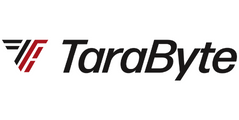Introduction
Understanding how accounts are mapped between Fishbowl Inventory and QuickBooks Desktop or QuickBooks Online is essential for accurate financial reporting. In my handout, which maps these transactions, I often refer to the "mapped account." Just because Fishbowl labels an account as an expense or cost of goods sold (COGS) account does not necessarily mean that it has to be mapped to those types of accounts in QuickBooks.
For instance, I frequently use service-type parts to relieve vendor deposits and indicate that bills have been paid via credit cards or third-party bill pay services such as Bill.com. These specialized service-type parts are mapped to balance sheet accounts rather than expense accounts.
Asset Account
An asset account is affected when purchasing an inventory-type part. The account is relieved when selling or using that inventory-type part. As highlighted in my sample chart of accounts, I highly recommend maintaining separate accounts for finished goods and raw materials, especially for manufacturers. This distinction allows tracking the movement of materials from raw to finished goods through manufacturing orders.
Expense Account
The expense account is used when purchasing any part other than an inventory-type part. Additionally, it is used when costing a part into manufacturing or work orders. Based on the provided chart, all part types have a mapped expense account except inventory-type parts.
Cost of Goods Sold Account
The cost of goods sold (COGS) account is impacted when a part is shipped on a sales order. This is a fundamental aspect of accounting services, ensuring that businesses accurately track their expenses and profitability.
Adjustment Account
Applicable only to inventory-type parts, the adjustment account is debited or credited when performing inventory cycle counts or making cost changes.
Scrap Account
Similarly, the scrap account applies only to inventory-type parts. It is debited when the scrap function is utilized, ensuring that businesses can track losses accurately.
Accrual Account
The accrual account is relevant for shipping-type part numbers. Outbound shipping costs accrue when using carton-based shipping.
Additionally, the accrual account is used for landed costs presented on a separate vendor bill from the inventory vendor. Examples of costs on separate bills include freight forwarder costs, customs duties, and trucking expenses. For better tracking, I recommend having two accrual accounts—one for outbound shipping and another for accrued landing costs.
Cost Variance Account
The cost variance account is utilized when employing the standard costing method in Fishbowl Inventory. When setting up a chart of accounts for standard costing, it is advisable to create two variance accounts—one for purchasing variance and another for usage variance. This distinction is particularly beneficial in a manufacturing environment.
Income Account
The income account is linked to the product and is impacted once a sale is shipped. This ensures that revenue recognition is accurately recorded and helps businesses maintain financial clarity.
By properly mapping accounts, businesses can ensure smooth integration between Fishbowl Inventory and QuickBooks, leading to better financial decision-making and compliance.
Conclusion
Understanding how mapped accounts function within Fishbowl Inventory and QuickBooks is essential for maintaining accurate financial records. Whether handling asset accounts, expense accounts, or specialized accounts like accrual and scrap accounts, having a clear mapping strategy is crucial. Properly structured accounting ensures financial clarity and prevents discrepancies in reporting.
Need Help Setting Up Mapped Accounts?
If you need assistance setting up mapped accounts or optimizing your accounting services, we are here to help! A properly mapped accounting system ensures seamless transactions and accurate financial reporting.
Get Expert Help Now


.png)
